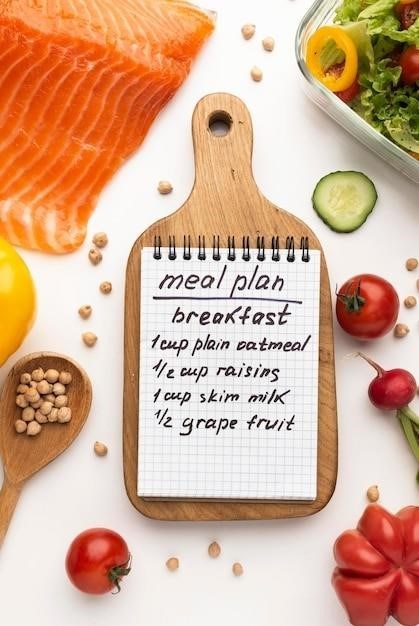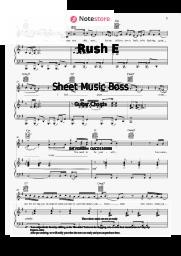La La Land Piano Sheet Music PDF⁚ A Comprehensive Guide
This guide explores readily available resources for obtaining “La La Land” piano sheet music in PDF format. Discover various websites, platforms like Musescore, and options for both free and paid downloads. Learn about different arrangements and difficulty levels for iconic pieces like “Mia & Sebastian’s Theme” and “City of Stars.”
Finding Sheet Music Online
The digital age offers unparalleled convenience for accessing sheet music. Numerous websites specialize in providing downloadable sheet music, often in PDF format. These platforms cater to various skill levels, from beginner to advanced pianists. Searching online using keywords such as “La La Land piano sheet music PDF,” “La La Land piano score,” or specific song titles like “City of Stars” or “Mia & Sebastian’s Theme” will yield a wealth of results. Be sure to check the source’s reputation and user reviews to ensure the quality and accuracy of the sheet music before downloading. Remember to respect copyright laws; only download sheet music from legitimate sources that have the rights to distribute the material. Many sites offer free sheet music, while others provide paid options with higher-quality arrangements or transcriptions. Explore different options to find the perfect fit for your skill level and preferences. Sites like Musescore offer a community-driven approach, with users sharing their arrangements and transcriptions.
Popular La La Land Songs for Piano
The film “La La Land” boasts a collection of memorable and emotionally resonant songs perfectly suited for piano arrangements. “City of Stars,” the film’s iconic duet, is a frequent choice for pianists of all levels, with numerous arrangements available online catering to different skill sets – from simplified versions for beginners to complex, nuanced interpretations for experienced players. Similarly, “Mia & Sebastian’s Theme,” the central melody that weaves through the narrative, is another popular selection. Its romantic and melancholic undertones make it ideal for expressive piano performances. Other frequently adapted songs include “Another Day of Sun,” known for its upbeat and energetic rhythm, and the poignant “Epilogue,” which beautifully encapsulates the film’s bittersweet conclusion. The availability of these songs in various arrangements ensures that pianists can find a version that matches their abilities and musical taste, making “La La Land’s” soundtrack a treasure trove for pianists of all backgrounds. The diverse arrangements also allow for creative interpretations, encouraging personal expression through the music.
Mia & Sebastian’s Theme⁚ Arrangements and Difficulty Levels
City of Stars⁚ Sheet Music Resources and Variations
The hauntingly beautiful “City of Stars” boasts a wealth of readily available sheet music resources. Numerous websites, both free and paid, offer various arrangements catering to diverse skill levels. Beginners can find simplified versions focusing on the melody, ideal for learning the song’s core structure. Intermediate arrangements introduce more complex chord progressions and rhythmic patterns, providing a more enriching musical experience. For seasoned pianists, advanced arrangements exist, showcasing the song’s intricate harmonies and allowing for greater expressiveness and technical display. Beyond the standard solo piano arrangements, you might discover versions incorporating duet parts, adding another layer of musical complexity and collaboration. Some arrangements even include backing tracks, providing a fuller orchestral sound to enhance the performance. The abundance of resources for “City of Stars” ensures that pianists, regardless of their proficiency, can find an arrangement that suits their abilities and musical aspirations, allowing them to fully appreciate and perform this iconic piece.
Epilogue⁚ Piano Sheet Music Availability
Securing sheet music for the poignant “Epilogue” from La La Land, often sought after for its emotional resonance and musical complexity, presents a variety of options. While readily available, the accessibility varies depending on the desired arrangement and level of difficulty. Several online platforms specialize in film scores and offer different versions, ranging from simplified arrangements for beginners to more intricate interpretations for advanced players. These platforms typically offer both free and paid downloads in PDF format, ensuring accessibility for a wide range of pianists. The free options might be simplified versions, ideal for learning the melody and basic harmonies, while paid versions often provide a more complete and accurate representation of the original composition, including nuances in dynamics and articulation. Websites dedicated to sheet music distribution often categorize arrangements by skill level, making it easier to locate a suitable version. Remember to check the specific details of each arrangement before downloading, paying attention to the level of difficulty and any additional instrumental parts included.
Other Notable La La Land Pieces for Piano
Beyond the iconic “Mia & Sebastian’s Theme” and “City of Stars,” La La Land’s soundtrack boasts a wealth of other captivating pieces ideally suited for piano arrangements. “Another Day of Sun,” with its vibrant and energetic melody, presents a joyful challenge for pianists. The “Engagement Party” sequence offers a more nuanced and sophisticated arrangement, showcasing the film’s emotional depth. “A Lovely Night,” a romantic ballad, provides a beautiful and lyrical piece for pianists to explore. “Someone in the Crowd,” a song brimming with energy and emotion, offers a dynamic and expressive piece. “Planetarium,” with its ethereal and atmospheric quality, presents a more reflective and introspective musical experience. “Start a Fire,” a song filled with passion and intensity, provides a powerful piece for pianists. Each of these pieces offers a unique musical journey, allowing pianists of different skill levels to explore the rich tapestry of La La Land’s musical landscape. The availability of sheet music for these pieces varies, with some readily available online and others requiring more diligent searching.
Where to Download Free and Paid Sheet Music
The quest for La La Land piano sheet music in PDF format yields a diverse range of options, catering to different budgets and preferences. Free resources, such as Musescore, offer a selection of user-submitted arrangements, providing a valuable entry point for aspiring pianists. However, the quality and accuracy of these arrangements can vary, so careful consideration and previewing are recommended. For higher-quality, professionally arranged sheet music, several websites offer paid downloads. These often include meticulously transcribed scores, ensuring accuracy and a more polished playing experience. The cost varies depending on the complexity of the arrangement and the vendor. Some platforms offer subscriptions granting access to a vast library of sheet music, including potentially the complete La La Land soundtrack, proving a cost-effective solution for dedicated musicians. Direct purchases of individual pieces are also common, providing flexibility for those seeking specific songs. Remember to always check reviews and verify the legitimacy of the source before downloading.
Websites Offering La La Land Piano Sheet Music
Numerous websites specialize in providing digital sheet music, including various arrangements of pieces from the acclaimed film, “La La Land.” Sheet Music Direct is a prominent example, offering a wide selection of officially licensed scores from reputable publishers. This ensures accuracy and high-quality arrangements, though at a price reflecting the professional production. Musescore, a collaborative platform, presents a contrasting approach. While offering free user-submitted arrangements, its quality can be inconsistent. Therefore, careful vetting of user reviews and a preview before download is strongly recommended. Other websites, often smaller and more niche, may offer free or paid downloads. However, exercising caution is crucial. Always check for reviews, verify the source’s legitimacy, and be mindful of potential copyright infringements. The availability of specific arrangements may fluctuate, and it’s advisable to compare offerings across different websites before committing to a purchase or download to find the best version for your skill level and preferences. Remember to check terms of service regarding printing and usage rights.
Musescore and Other Online Platforms
Musescore stands out as a significant online platform for accessing sheet music, including various arrangements of “La La Land” pieces. Its unique characteristic is the user-generated content aspect. While this offers a vast library of potentially free scores, a crucial caveat is the varying quality. Unlike commercially published sheet music, user-submitted arrangements lack professional editing and standardization. Therefore, discerning users should carefully examine reviews and preview available versions before committing to a download. The platform offers both simple and complex arrangements, catering to diverse skill levels. However, the reliability of accuracy and musical correctness is not guaranteed. Beyond Musescore, numerous other online platforms exist, each with its own strengths and weaknesses. Some may specialize in specific genres, while others focus on free versus paid content. Always verify the legitimacy of the source and check user reviews to gauge the quality and accuracy of the sheet music before downloading. Remember to respect copyright laws and only download legally available content.
Tips for Choosing the Right Sheet Music
Selecting the appropriate “La La Land” piano sheet music requires careful consideration of several factors. First, honestly assess your playing ability. Choosing a piece that is far beyond your skill level will lead to frustration and hinder progress. Start with easier arrangements and gradually work your way up to more challenging versions. Secondly, examine the arrangement’s quality. Look for clear notation, accurate rhythms, and a logical layout. Avoid scores with numerous errors or inconsistencies, as these can make playing difficult and frustrating. Pay close attention to reviews and comments left by other users, especially regarding potential issues with the accuracy or readability of the sheet music. Thirdly, consider the specific version of the song. “La La Land” features many pieces, each with multiple arrangements. Some might be simplified for beginners, while others offer intricate, advanced variations. Finally, determine your preferred level of accompaniment. Some sheet music includes only the piano melody, while others add chords or even full orchestral arrangements. Choose the version that best suits your personal preferences and technical abilities. A well-chosen piece will ensure a rewarding musical experience.
Printing and Using Your Downloaded Sheet Music
Once you’ve acquired your “La La Land” piano sheet music PDF, printing it correctly is crucial for a smooth playing experience. Ensure your printer settings are optimized for high-quality output; select a setting that prioritizes clarity and accuracy of notes and symbols. Use high-quality paper, preferably thicker stock to prevent the ink from bleeding through, especially if using a heavier ink saturation. Consider using a paper type that minimizes glare under various lighting conditions for comfortable reading during practice sessions. After printing, carefully review the sheet music for any printing errors or inconsistencies before starting to play. If any issues arise, reprint the pages affected. For optimal use, consider using a binder or folder to keep your sheet music organized and protected from damage. Page numbers are extremely helpful, and if not included, adding them manually will save time and frustration during practice. Also, think about using a music stand to hold the pages securely in place. This will prevent them from shifting or falling during playing. Remember, having well-organized, easily readable sheet music contributes significantly to a more enjoyable and effective practice session.





